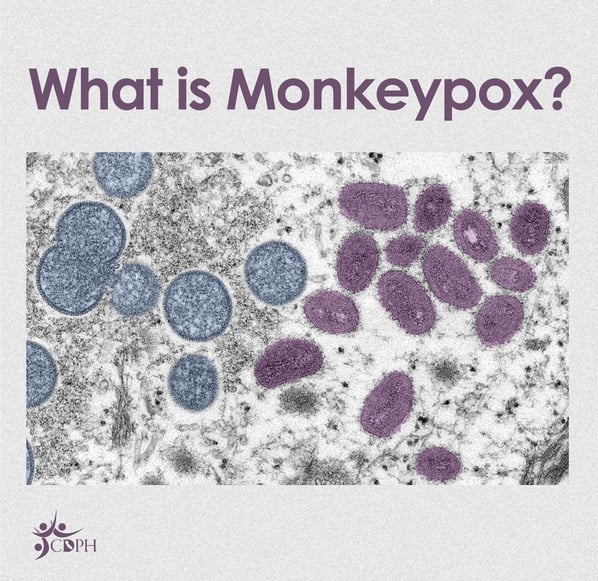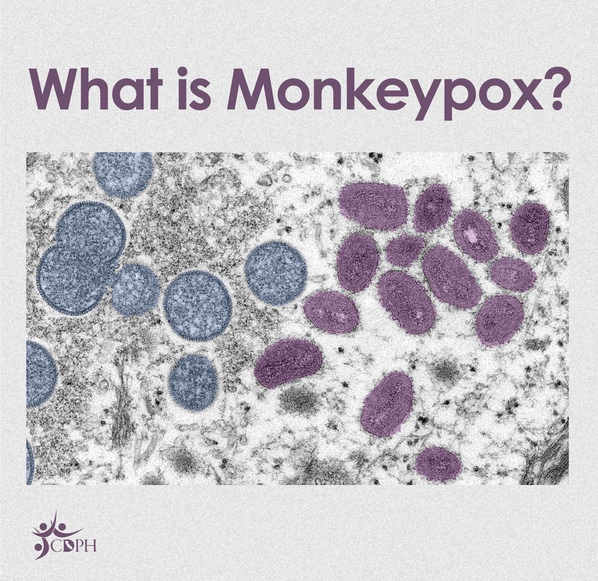
Monkeypox virus has been in the news as the number of cases in the Los Angeles area and across the country is on the rise, according to data from the California Health Department and the Centers for Disease Control and Prevention.
Most cases so far, including the 22 in Los Angeles County, have primarily occurred in sexual contact among gay and bisexual men.
Here’s what we know.
What is monkeypox?
Monkeypox is a viral infection from a pox virus that was first discovered in monkeys in 1958. It is believed that the virus naturally lives and reproduces in rodents in central and western Africa. The first human case of monkeypox was identified in the Democratic Republic of Congo in 1970. The last major outbreak in the United States was in 2003 from Gambian giant rats imported by an exotic pet dealer.
“There have been sporadic exposures to cases over the years,” said Dr. Erica Pan, state epidemiologist with the California Health Department. “This year is the first time there have been so many cases in countries that don’t normally have monkeypox.”
Monkeypox infections in the U.S. are usually associated with travel to west or central Africa or contact with imported infected animals.
How is monkeypox spread?
“In this current outbreak, the highest risk of transmission is very close, skin-to-skin contact, including kissing and sex, with the lesions someone has on their skin,” Pan said. “But monkey pox is not a sexually transmitted disease.”
“There is some potential risk with prolonged, intimate face-to-face contact with someone. But monkeypox is very different from COVID, which is a respiratory disease and highly infectious,” Pan said
“We have seen rare cases where the virus can be transmitted if someone shares clothing, and someone with lesions was wearing that clothing,” she said.
What are the symptoms of monkeypox?
“The symptoms are flu-like, including fever, muscle aches, swollen lymph nodes,” Pan said. “Sometimes swollen lymph nodes in our neck happen before the rash or lesions appear. The rash can be painful.
“These rashes can be infectious for a very long time. The lesions heal, but they can take days to weeks. They will scab over and heal,” she said.
When does someone develop symptoms?
“People can develop symptoms anywhere from five days to three weeks after exposure,” Pan said.
What does it look like?
“They look like blisters, but they can look like chickenpox, syphilis, or herpes, and there are different stages of these blisters,” Pan said.
Where does it appear on the body?
“It can appear almost anywhere, but what’s been noted in many of the recent cases is that it appeared in the genital and anal area,” Pan said. “One thing that makes it different from other rashes is that it can appear on the palms, soles of your feet, the chest, the face. Monkeypox could appear on one part of the body or all over the body,” Pan said.
Monkeypox cases in gay, bisexual men
Some of the initial cases in Europe were traced to a circuit party on the Canary Islands and a leather event in Belgium that were attended by gay and bisexual men.
The Los Angeles County cases thus far have no history of international or out-of-state travel, meaning the virus had been circulating in the community before it was detected, the county health department said in a press release Friday.
No hospitalizations or deaths have been reported, the release said.
Through contract tracing it was determined that the gay and bisexual men in Los Angeles County who were diagnosed “attended large events where the exposure to monkeypox may have occurred,” but the release didn’t offer other details about what type of events or where the events were located.
“It’s not that queer people are any more likely to get monkeypox. Nothing about monkeypox makes it a uniquely queer disease. Anybody can get monkeypox,” said Dr. James Simmons, a hospitalist nurse practitioner in Los Angeles.
“It’s purely coincidental that the spread started at queer events in Europe,” Simmons said. “Queer people historically travel within queer communities and attend queer events. So because this outbreak likely, and coincidentally, started at queer events, it’s important we make sure the LGBTQ+ community is educated regarding their potential risk.”
Prevention tips
“Talk with your sexual partner about any recent illnesses,” Pan said. “Be aware of any new sores or rashes on your body or your partner’s body, including the genital and anal area. Avoid close or sexual contact with someone who does have sores or rashes.
“If someone does have a case, it’s important to cover the rash and avoid contact with people.”
Also, this month, the CDC released guidance for lowering the chance of contracting monkeypox, noting that festivals, concerts and other events where attendees were likely to be fully clothed were safer than spaces, including raves, saunas, and sex clubs, where minimal clothing was worn.
Is a vaccine available?
“There are some smallpox vaccines that help, but they are not available everywhere. It’s very limited. Contact your doctor or qualified healthcare provider for more information about vaccine availability,” Simmon said. “People in Los Angeles County who don’t have a primary healthcare provider can call 211 for information about resources and services.”
Is a test available?
“There is a test. Ask your healthcare provider about it if you are interested,” Pan said.
Treatments
“Covering the lesions is one of the most important things to do. To emphasize, this disease has mostly been a mild outbreak in 2022 with minimal hospitalizations or death,” Pan said.
“Most treatment is supportive, easing the symptoms of illness,” Pan said. “There is an antiviral drug for anyone who has a compromised immune system or for anyone whose lesions are not healing well. People can talk with their doctor about it.”
Related posts:








